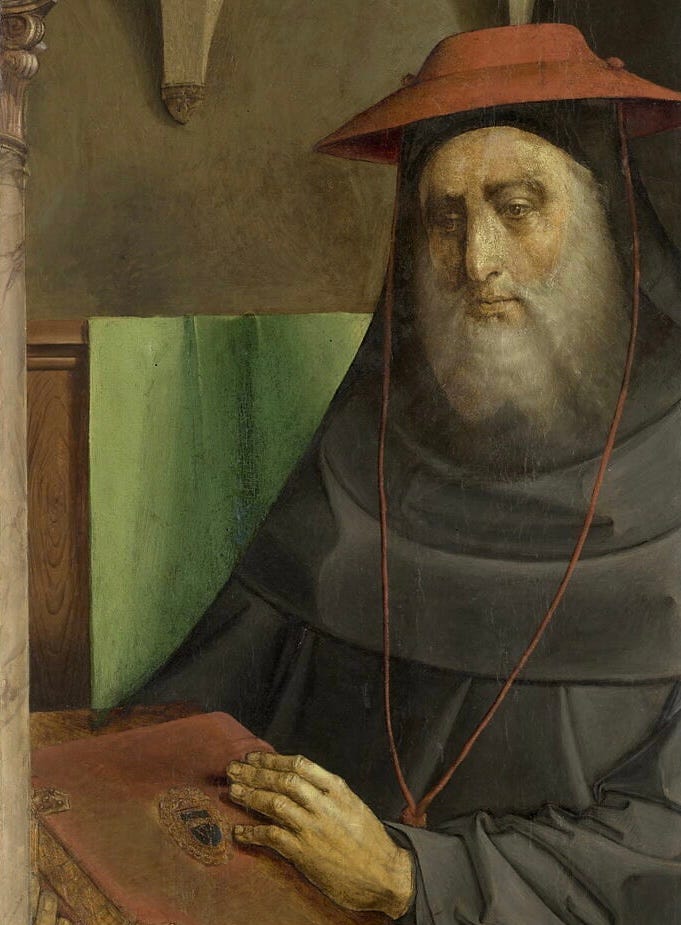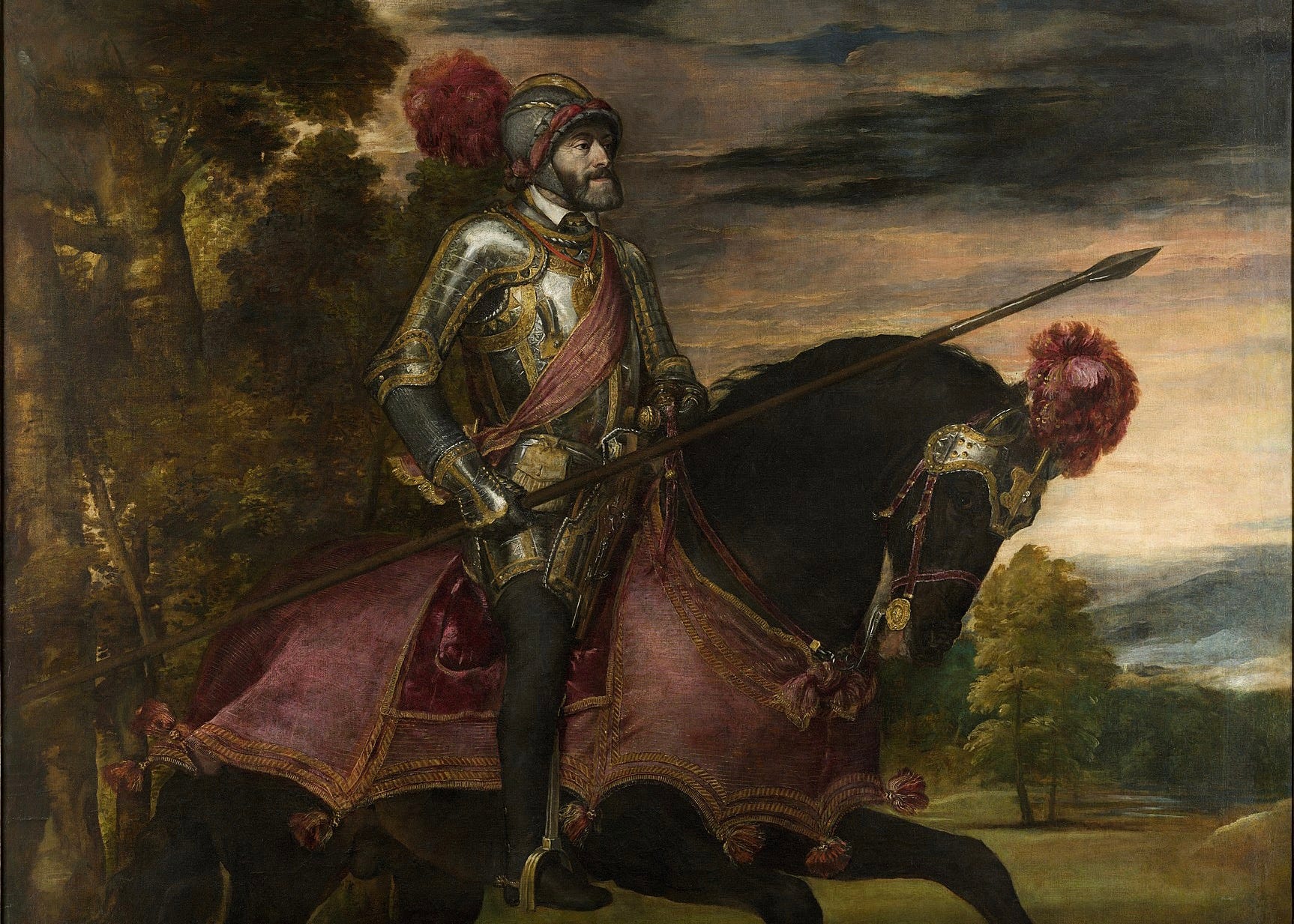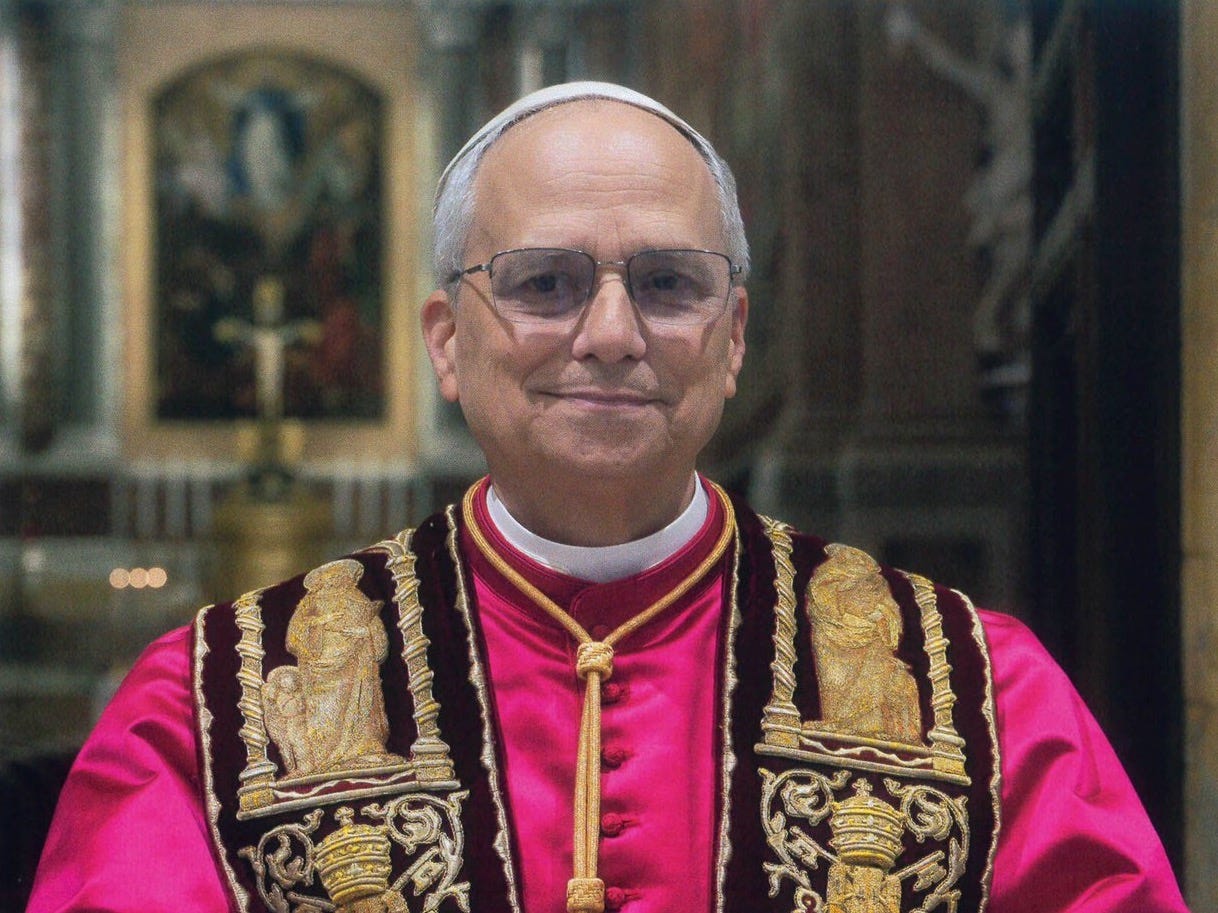Holy Whiskers! That Curious Time Every Pope Wore a Beard
Smooth Operator: Pope Leo XIV Says Blessed Are the Barefaced, but Pontiffs Weren’t Always Hairless
The new pontiff defies stereotypes. Pope Leo XIV is the first American-born pope, a loyal White Sox fan, possibly a Costco member—he even plays Wordle. But as far as popes go, in one way he’s boringly traditional: the man has no beard.
Go ahead, think about it. Give me a modern pope of Rome who has sported a soup strainer. I’ll wait. Oh, that’s right! There are none. But it wasn’t always that way.
When Michel de Montaigne visited Pope Gregory XIII in December 1580, the secretary of the great essayist took notes, later published in Montaigne’s travel journals. Though the pope’s Bolognese accent was ugly—“the worst idiom in Italy”—his appearance was not. “He is a very handsome old man,” penned the secretary. Despite being more than eighty, he was “healthy and vigorous” with a “face full of majesty” and “a long white beard.”
Still, Montaigne visited amid what amounts to a bearded blip in ecclesiastical history. Owing to both papal and canonical disapproval, facial hair has been significantly underrepresented in the Latin church. Whereas Orthodox hierarchs have long been barbate and bushy, Latin clerics have usually preferred naked cheeks and smooth chins.
The Catholic Encyclopedia offers some background for this bias. But it’s fun to contemplate the larger period that bracketed Montaigne’s visit, a time when the long-standing prejudice was sorely tested.
Let’s start just before, during the papal election of 1455.
Poor, Poor Bessarion
The conclave had whittled down its options. One of the finalists? A Greek cardinal named Basilios Bessarion. Though he had abandoned the Eastern Church, he retained the Orthodox habit of wearing his man mane long and full—an unpopular choice at the time.
At one point in the final deliberations a French cardinal leapt to his feet and implored his fellow cardinals to reject Bessarion. “Shall we give a Greek pope to the Latin Church?” he started. “Shall we make a neophyte the supreme head? Bessarion has not yet shaven his beard. . . .” Hair-esy!
We can, said Bessarion’s opponent in so many words, do better. That Jesus and St. Peter probably wore beards must have escaped his imagination like Luther fleeing the Diet of Worms.

Instead of Bessarion, the conclave elected the beardless Callixtus III. Born Alfons de Borja, the Italians knew this Spanish cardinal as Alonzo Borgia. The Borgias are sometimes considered Europe’s first crime family. While Callixtus’s reputation was faultless, his nephew later became pope and is primarily remembered for his many illegitimate children and general corruption—though he did possess a pristinely hairless chin.
Bessarion’s jaw bush might have cost him more than the papacy. Remaining active in church affairs following the conclave, he suffered another embarrassment while on embassy to France. During a meeting with Louis XI, the peevish king yanked Bessarion’s beard while joking that Greeks were partial to their barbarism—the kind of pun that surely garnered chuckles from the court. The Latin for beard and barbarian share the same root word, barba.
For his part, Bessarion was so humiliated by the indignity he up and died on the way home. Alas, the poor Greek cardinal was just a man born too soon.
When Beards Grew Free
About fifty years after Bessarion’s ill-fated conclave, Pope Julius II (whose papacy stretched from 1503 to 1513) stopped shaving to mourn the wartime loss of a city. He kept his penitential thatch for two years. The habit then skipped a couple of popes, but Clement VII (1523–1534) likewise let his grizzle grow after Holy Roman Emperor Charles V sacked Rome in 1527.

Some criticized Pope Clement for his crumb catcher. He ignored them all and maintained it until he died. Nonetheless, to his defense swung the humanist Pierio Valeriano who penned Pro sacerdotum barbis, which, as the title of the tract suggests, is all about priests and their fuzz.
If your Latin is any good, you can read it here. Mine isn’t, so I’m relying on the summary provided by Kenneth Gouwens in Remembering the Renaissance:
Tellingly, the Pro sacerdotum barbis locates the causes of Rome’s sufferings in the “feminine” delicacies of the Roman clergy, which had provoked the wrath of God and threatened to do so again. Because of the excesses, God “commanded that our goods be taken from us, that our rather sumptuous houses be either brought down or burned, and that the many delights of our too-wanton minds be plucked away from us.” The wearing of beards, then, signifies the effort to reform the “effeminacy” into which the clergy had slipped.
Charles V, after all, had a beard. That was it! Valeriano’s treatise did the job, and cheek scruff and neck shrubs were back from exile.
In the twelve decades between 1523 and 1644, if we believe papal portraiture, seventeen fully bushy and bristly popes filled the chair of St. Peter, including Gregory XIII, whose hoary chin vestment, as we’ve seen, dazzled Montaigne and his secretary:
Clement VII (1523–1534)
Paul III (1534–1549)
Julius III (1550–1555)
Marcellus II (1555)
Paul IV (1555–1559)
Pius IV (1559–1565)
Pius V (1566–1572)
Gregory XIII (1572–1585)
Sixtus V (1585–1590)
Urban VII (1590)
Gregory XIV (1590–1591)
Innocent IX (1591)
Clement VIII (1592–1605)
Leo XI (1605)
Paul V (1605–1621)
Gregory XV (1621–1623)
Urban VIII (1623–1644)
Interestingly, Urban VIII’s family name was Barberini—the bearded ones.
Chins Win, Alas
The trend didn’t stop immediately, but it began to recede. At some point Urban lopped off his sideburns and began wearing just a mustache and goatee. Innocent X (1644–1655) kept up the style, and the next six popes followed suit:
Alexander VII (1655–1667)
Clement IX (1667–1669)
Clement X (1670–1676)
Innocent XI (1676–1689)
Alexander VIII (1689–1691)
Innocent XII (1691–1700)
While Innocent embraced the fashion, he took it with him to the grave. And frankly, I don’t know how we call a man innocent who murdered the mouth brow.
All twenty-four of his successors have taken razors to the ruff. Some have conjured pious-sounding reasons for this facial pruning—for instance, cutting away sin. Regardless, in more than three centuries now, not one pope has worn a beard of any sort. And, if you ask me, the world is a little less for the loss.
But hair grows new every morning! Perhaps Leo might be open to a bit of friendly counsel, maybe even a light penance, for this excessively zealous tonsure. As someone once said, after all, “stranger things have happened in Rome.”
Thanks for reading! Please hit the ❤️ below and share this post with your friends.
Not a subscriber? Take a moment and sign up. It’s free, and I’ll send you my top-fifteen quotes about books and reading. Thanks again!




As a Wordle & Connections devotee, I extend a welcome to the new pontiff. Though not Catholic, it's easy to admire a letters fan.
Hahah!
The thought that immediately came to mind when you contrasted the Roman and Orthodox priestly facial coiffure, was the difference between Ancient Greek and Roman busts. The Ancient Greeks? Generally bearded and long haired. The ancient Romans? Generally clean shaven and short haired.